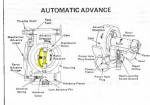als804
Member
- 89
- 66
- 18
- Location
- kimcheon, ROK
hello
i have seen so many writings about adjusting fuel screw valve to increase in fuel supply to injectors.
but i am wondering "is this really effective?"
i don't know the difference between doing this and putting the pedal more.
putting the pedal more deeply also can supply more fuel to injects.
why people do adjust that?
fuel screw adjustments is to increase the fuel at the same rpm?
please let me know!!
i have seen so many writings about adjusting fuel screw valve to increase in fuel supply to injectors.
but i am wondering "is this really effective?"
i don't know the difference between doing this and putting the pedal more.
putting the pedal more deeply also can supply more fuel to injects.
why people do adjust that?
fuel screw adjustments is to increase the fuel at the same rpm?
please let me know!!



